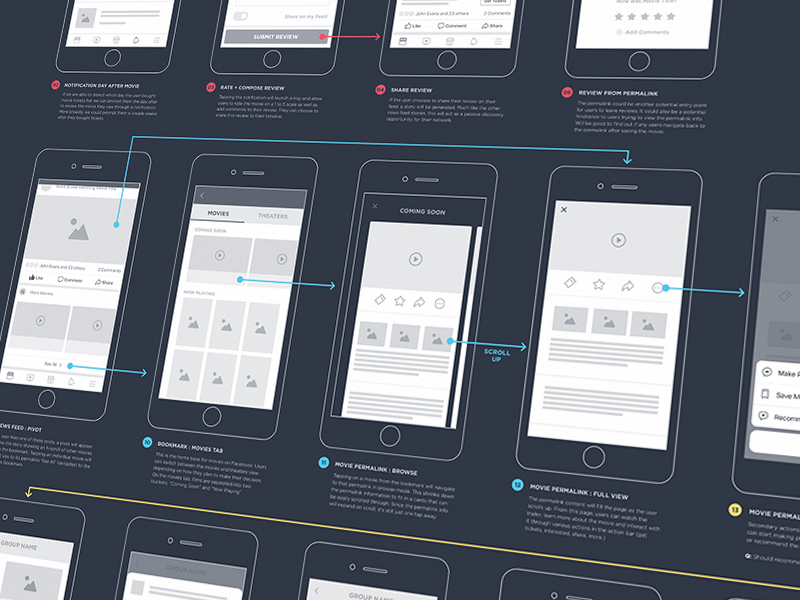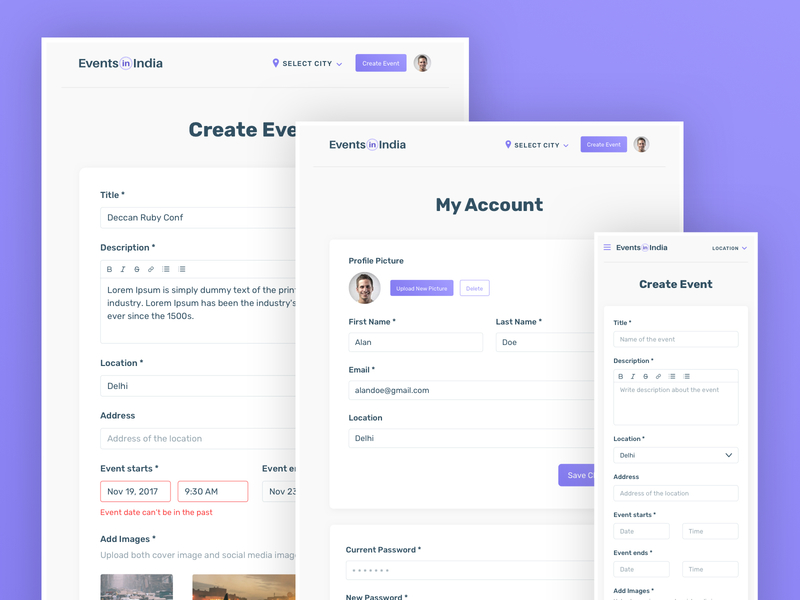In today’s fast-paced and competitive world, companies are constantly looking for new ways to work more effectively. Agile quickly becomes the backbone of any company in such a scenario. But even with agile methods in product design, there is still a risk of spending a lot of time developing a product that needs improvement or even a complete overhaul after release. Here comes Lean UX in the rescue. It acts as a reinforcement in the design process and is an opportunity to create useful products.
Let’s discuss Lean UX and its main principles which are essential for creating products that people love.
What Does Lean Mean Anyway?
Before starting with Lean UX, it’s better to understand what LEAN means. Lean is synonymous to a word Learning. It is the concept of a learning process that became quite popular in the field of software development. With this method, you want to do the right and useful for the customer with the right resources in use. That happens with the right quality and the appropriate time. LEAN means being respectful of everyone involved in the system, including the customer, employees, suppliers, the environment, etc.

Lean UX is primarily a work methodology inspired by the philosophy of Lean start-up, Design Thinking, and Agile Development. The goal of Lean UX is to make the most of these approaches to create an optimal product, meeting the real needs of users.
Lean UX: The Retreading
How to reconcile UX and agility? The answer is Lean UX. In essence, the Lean UX environment is about taking the best parts of the current UX methodology and rebuilding and adapting it to the agile world. The first thing that falls victim to the reduction is rigid project goals and the belief that a single design solution is sufficient for the entire project.
Lean UX also relies mainly on reduction: away from the need to exchange tons of documentation between the UX and development teams. No transfer agreement between departments anymore. Instead, Lean UX is working on team collaboration. The Lean-UX methods involve the entire team and benefit from the ongoing discussion. The team grows together as such.
The 8 Basic Principles Of Lean UX You Should Know
When ideas from lean manufacturing and user-centered design come together, they result in streamlined and effective UX processes. Highly motivated teams compete for the best ideas. Problems are found early in regular UX tests with real users.
Waste of time and budget is avoided. Is that just wishful thinking? – We think no. The following 8 principles can help to live a Lean UX process.
During the development phase, prototypes are used to conduct live usability tests. As soon as something exciting happens in the test, the team is called together to look at it together. Real-time user research is a component of the Lean-UX process. And now comes the best- Lean UX relies on existing usability and design methods. These methods ensure that the user may not face any difficulty while dealing with the product in coming time.
THE 8 BASIC PRINCIPLES OF LEAN UX YOU SHOULD KNOW
When ideas from lean manufacturing and user-centered design come together, they result in streamlined and effective UX processes. Highly motivated teams compete for the best ideas. Problems are found early in regular UX tests with real users.
Waste of time and budget is avoided. Is that just wishful thinking? – We think no. The following 8 principles can help to live a Lean UX process.
The most important principles of Lean UX at a glance:
-
Interdisciplinary teams
New knowledge arises at the interfaces of different departments. That’s why Lean UX relies on interdisciplinary collaboration. A team should include software development, product management, and design experts.

But beyond that, representatives of marketing, sales, and strategic management should also participate. In short, a Lean UX team brings together all the competencies needed to succeed in the product.
-
Results Instead of Throughput
Lean UX is about delivering results in the form of business goals, not delivering features or specifications. It’s easier to gauge the throughput of a team in features, but it’s not guaranteed that these features will help achieve your business goals. Only when the feature is on the market, you know if it has the desired effect.
That’s why Lean UX values the whole team’s business goals and progress.
-
Reduce waste
A core principle of lean manufacturing is to reduce waste. In the industrial sector, for example, it was about minimizing the storage of raw materials; “just-in-time” was the logical consequence. Transferring to Lean UX teams means relinquishing all redundant activities that do not add value.
Waste can take many forms. Detailed specifications of never-implemented features are as wasteful as overlong meetings rather than fast, direct communication.
-
Small work packages
The risk of waste is minimized when working in small work packages. UX concepts and designs should only be used if the team can process them directly. Large work packages make teams inefficient because they have to wait for the concept to be handed over and often need to make changes to the concept during implementation.
Instead of maintaining large lists of ideas that have never been implemented, it is better to prepare only as many features as the team can implement.
-
Constant learning
Those who use Lean UX, try to learn from their successes and failures and to improve so permanently. At the beginning of each iteration is the idea generation “Think”. Here, existing knowledge is brought together and a hypothesis is drawn as to how to reach the goal.
Subsequently, a new product version or prototype is created “Make” and the hypothesis is tested “Check”. Whether the hypothesis test is successful or not – you have learned something. The insights flow into the next iteration. So you can follow a continuous learning and improvement process.
There are many ways to test a hypothesis of success. It can be done by either quantitative data collections such as Funnel analyzes and A / B tests or qualitative methods such as UX testing. To achieve the greatest learning effect, it is recommended that the entire interdisciplinary team be involved in user research and the discussion of the results.
-
Doing Instead of Analyzing
It’s better to build and test the first version of a product than to spend days discussing all the details. The conference room is unlikely to be the answer to all questions and customers will raise new questions as soon as they have the product in their hands.
That’s why it pays to tackle and quickly create a first product version, or a prototype.
-
Learning from growth
The primary goal for a new product is rapid growth. This only applies if you know which product is right for the targeted market. It is often the case with new products that it is still unclear what exactly the customers need and what they are willing to pay for. The product or individual functions are still frequently changed during this phase. Learning is more important than growth. In close contact with the users, hypotheses must be established and checked.
Only when you have found what the market demands, it is worthwhile to invest in the scaling. Otherwise, one is again faced with the danger of waste.
-
Failures are allowed
To find out if you are creating the right product, it is necessary to conduct experiments. Many ideas will fail in the experiment. But even failed experiments help to achieve the goal; after all, you know which way you can already check off.

It is important for the team to know that failures are allowed and desired. The sooner a failure is established, the less time and money is wasted.
Conclusion
Lean UX is a fundamental process of rethinking. Some UX designers even call it a revolution. But we believe that Lean UX should not be considered as a revolution – it’s an evolution. The market is changing and digital products are becoming more sophisticated. The product team needs to be flexible and able to adapt to changes. Lean UX makes it easier to continuously evaluate whether we are doing something right and creating products that user appreciate.


